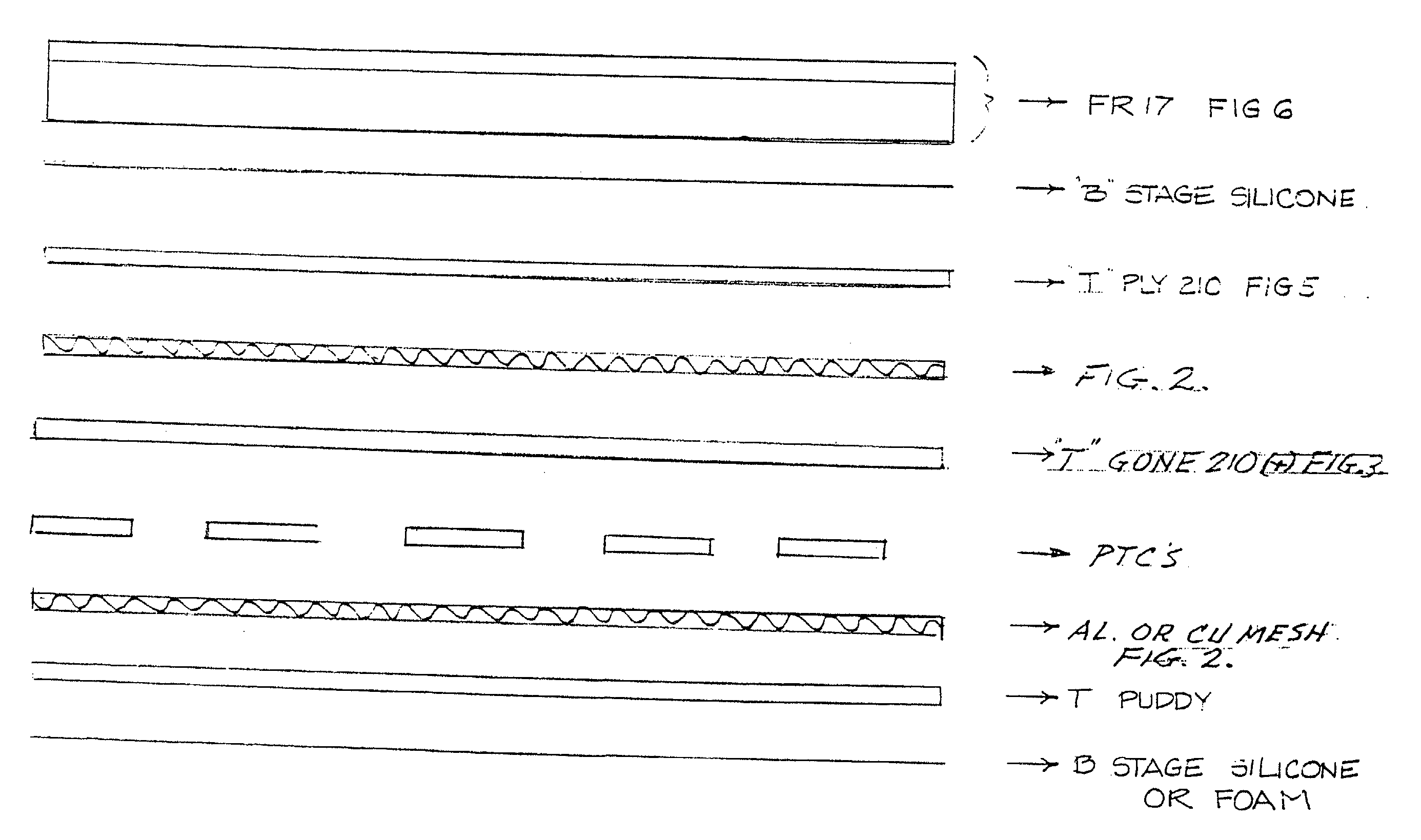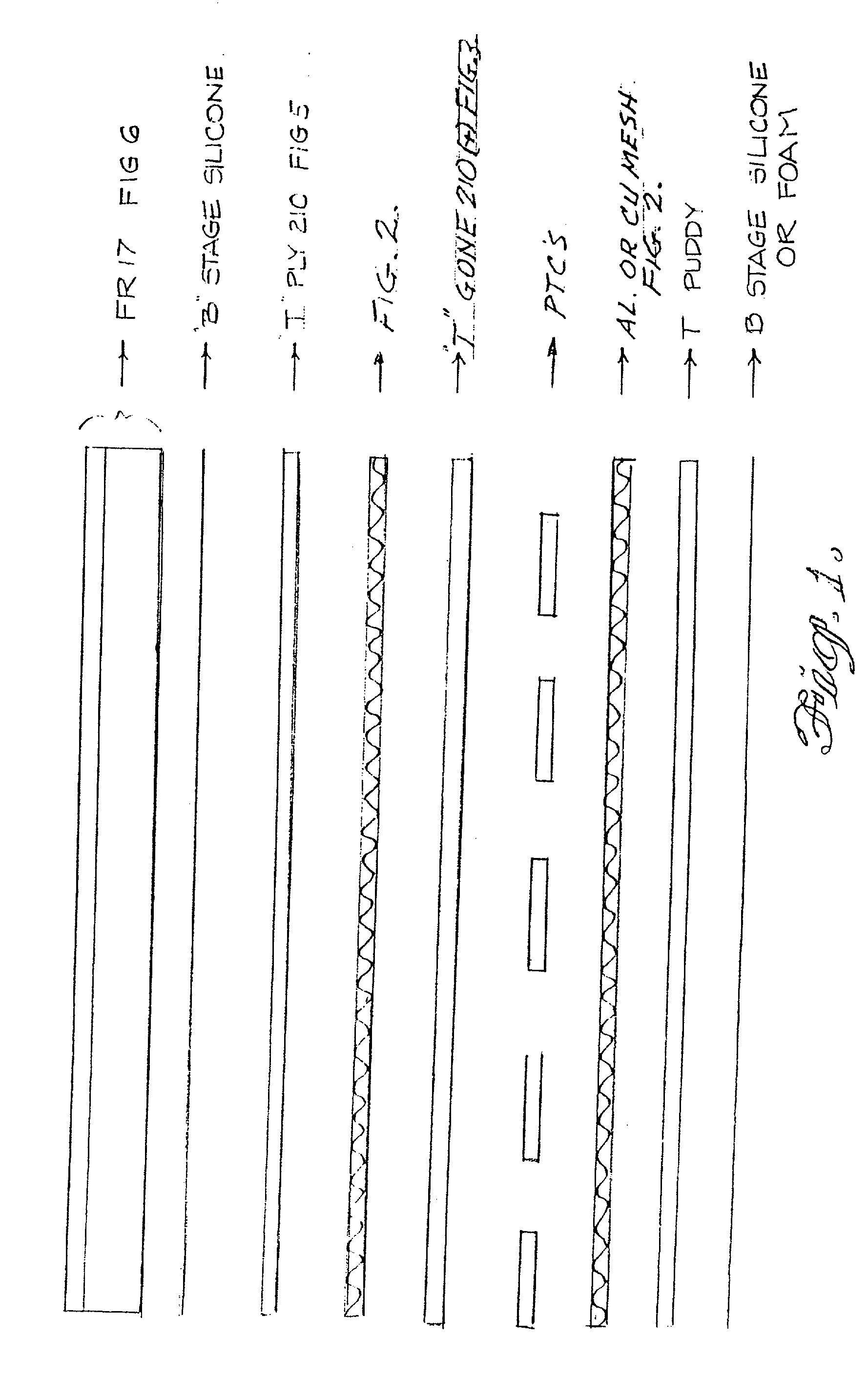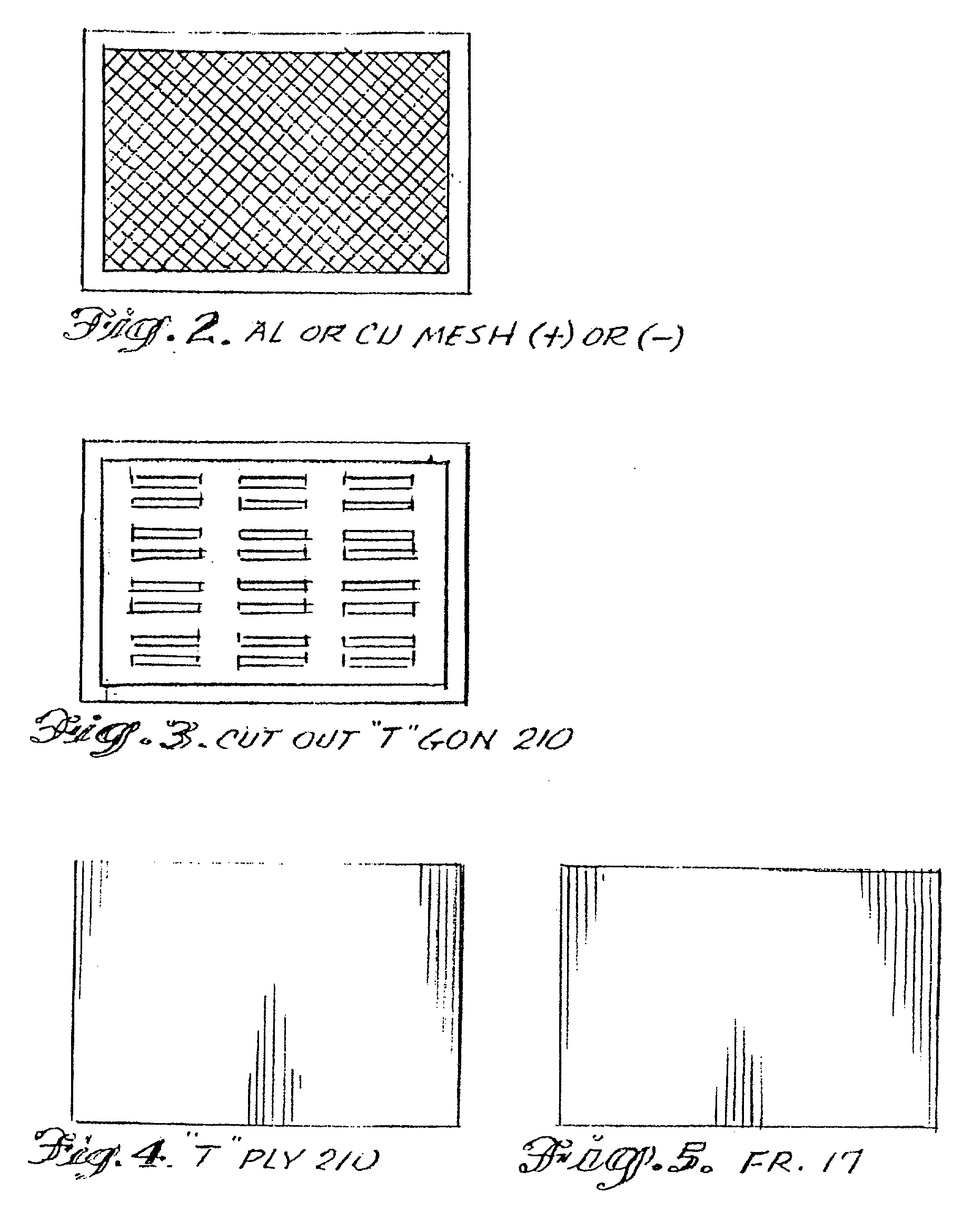Internally temperature controlled heat blanket
a heat blanket and temperature regulation technology, applied in the field of heat blankets, can solve the problems of unsatisfactory overshooting, unsatisfactory overshooting, and inability to provide a safe temperatur
- Summary
- Abstract
- Description
- Claims
- Application Information
AI Technical Summary
Problems solved by technology
Method used
Image
Examples
Embodiment Construction
[0032] As hereinafter described, it will be seen that recent developments in and availability of heat transfer polymers and thermal barriers have enabled the successful use of PTC devices in the present heat blanket which has the following features and advantages:
[0033] 1. A blanket constructed with a thermal barrier, operating at 150.degree. F. to 700.degree. F. to the applied component, that can be handled by the top layer of the constructed blanket without harm by an operator.
[0034] 2. A blanket that can be cut to other geometries and maintain all the thermal qualities of the initial construction.
[0035] 3. A blanket that does not need an external zone controller and is self controlled.
[0036] 4. A blanket that does not have thermal overshoot which can damage other closely related parts.
[0037] 5. A blanket that can be operated from several electrical standard voltages or frequencies, including direct current (dc).
[0038] 6. A blanket that does not require a series resistive wire-typ...
PUM
 Login to View More
Login to View More Abstract
Description
Claims
Application Information
 Login to View More
Login to View More - R&D
- Intellectual Property
- Life Sciences
- Materials
- Tech Scout
- Unparalleled Data Quality
- Higher Quality Content
- 60% Fewer Hallucinations
Browse by: Latest US Patents, China's latest patents, Technical Efficacy Thesaurus, Application Domain, Technology Topic, Popular Technical Reports.
© 2025 PatSnap. All rights reserved.Legal|Privacy policy|Modern Slavery Act Transparency Statement|Sitemap|About US| Contact US: help@patsnap.com



